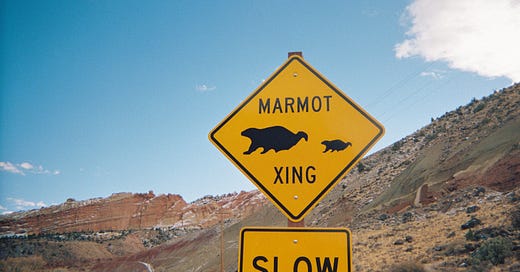It started with: “The climate crisis is also a crisis of culture, and thus of the imagination.”
Amitav Ghosh’s The Great Derangement and Maggie Nelson’s On Freedom: Songs of Care and Constraint form the foundations of this newsletter. The quote is from Ghosh, who declares this age—our age—shall be known in the future as “The Great Derangement,” a time of concealment that prevented us from recognizing the realities of our plights. “Where are the mentions of one of the biggest calamities humanity ever faced?” he imagines future historians asking of our art and literature.
I wanted to find them, so I began digging.
My first salaried job out of college was teaching high school literature. The tenth grade curriculum dedicates a semester to research skills, leaving the topic open for teacher’s choice. Enchanted with Ghosh’s question, I turned my students’ attention to climate change. I began the first day with Jesmyn Ward, “Fiction reveals truth that reality obscures,” and set off into the wilds of climate fiction, a land lightly tread and faintly mapped.
Unable to find anything close to a “climate fiction canon,” I cobbled our foundations. We read Ursula K. Le Guin, Paolo Bacigalupi, Ruth Ozeki, and Ted Chiang. We spent a day looking at the gorgeous “History of Science Fiction” infographic by Ward Shelley, finding nooks and crannies we could label “clifi.” We heeded Le Guin’s famous call:
“We live in capitalism, its power seems inescapable – but then, so did the divine right of kings. Any human power can be resisted and changed by human beings. Resistance and change often begin in art. Very often in our art, the art of words.”
We began to imagine our world anew.
Emboldened, students spent six weeks creating their own works of climate fiction. They began by researching an environmental issue close to home, laboring over newspapers and learning how to use the library. Then, with their bundles of clips, articles, and notes, they began to write.
Maggie Nelson, in her meditation on the implications of the climate crisis on culture, asks: in a time of crisis, what do we tell each other? And what can writing add, if anything, to the conversation? Writing is slow. What is the value of this patient labor in a world where we are reaching tipping points, every summer is the hottest one yet, and the countdown clock drums on?
I haven’t always been convinced there was any value in the slow and steady. Since high school, I have protested, marched, organized, advocated, agitated, and waxed poetic for climate justice and its intersecting issues. The urgency of the fight makes it so using my body has always felt like the right way to move.
But now, writing?
I took action, but I didn’t always know what for. I knew what I was against: greedy oil and gas executives, mines and pipelines on Native land, expansion of fossil fuel’s dinosaur infrastructure, to name a few. But I lacked a vision for a world I actually wanted to live in. When you spend so much of your time against something, the fire can burn out. You get daily lessons on why it’s so hard to live that it makes it difficult to keep up the will.
Then, I got to read my students’ stories. And how they bursted with new visions! Their stories came alive in Los Altos, CA, a compound in Nigeria, and inside Earth Moon II spaceship. They are uncompromising, refusing to cede to despair or pollyanna hope. They imagine superheroes organizing communities to save a drying river; they chronicle a family’s forced migration from their home after a deluge. They re-envision new worlds using ingredients from the old.
Climate fiction provided a sandbox where studying the issues actually felt like playing with solutions. It was a refreshing vantage point from which to face the climate crisis head on, supplied with the humanistic tools of inquiry and creation. Fiction reveals the truth that reality obscures, in the reading and writing of it.
While climate literature may not be the Green New Deal, it nurtures a culture where the policy can come to fruition, whether or not it passes in Congress. These works can crack open new formal and thematic space within contemporary fiction by bending linear plotlines and refusing simple solutions. Climate stories can help us wade through the complex and messy thicket of our present day ecology to uncover more questions and bushwhack new paths. Climate poetry and art can provide refuge to tend our hearth and keep our smolder from sputtering out.
Because, at the end of the day, we spend all this time with art and literature to feel something. Writing will “pierce” you, if you let it. Writing, in its slowness, spins an intimacy that can open you up to the all of climate change: the dying fish, the revitalizing river. There is the global problem, there is its local manifestation, and then there is the intimacy of how it lodges into our corporeal selves, our emotional beings. Gosh darn it, I still believe when people are moved, they will move, and make moves together. What I’m saying is that opening ourselves up emotionally to climate change, the weight and wash of it, will pierce us, and we will be better for it, and we will act, because when you feel it all, when you feel what the dying animals and burning planet and melting glaciers are feeling, when you open yourself to the possibility of that ecology of intimacy, you will act, because acting is the only thing left to do.





